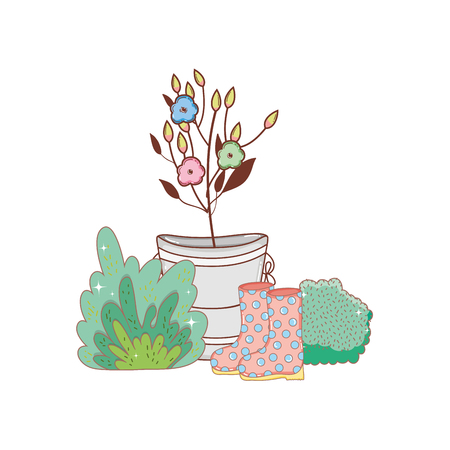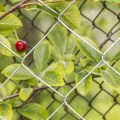1. Understanding the Difference: Pruners vs. Shears
If you’re new to gardening in the U.S., knowing your tools is half the battle. Two of the most essential—and often confused—tools are pruners and shears. Pruners, sometimes called hand pruners or secateurs, are designed for one-handed use and are perfect for snipping stems, deadheading flowers, and trimming small branches up to about half an inch thick. They give you precision and control when shaping shrubs or harvesting herbs. On the other hand, shears (often referred to as hedge shears) feature long blades and two-handed grips, making them ideal for shaping hedges, cutting back ornamental grasses, or tackling clusters of soft-stemmed plants all at once. Think of pruners as your go-to for detailed work and shears as your tool for broader cuts or larger surface areas. Choosing the right tool depends on the job: reach for pruners when working close-up with woody stems or delicate flowers; grab your shears when it’s time to tame a rowdy hedge or quickly trim back perennials. By understanding these differences, you’ll save time, effort, and keep your garden looking its best.
Types of Pruners and Shears: A Quick Overview
If you’re just starting out with gardening, choosing the right pruners and shears can feel overwhelming. The good news is, most American gardeners rely on a few tried-and-true types. Understanding the differences helps ensure your plants stay healthy and your work stays easy. Here’s a rundown of the most common options and what they’re best at:
| Type | Best For | Key Features |
|---|---|---|
| Bypass Pruners | Live stems and green wood | Two curved blades that pass by each other like scissors; makes clean, precise cuts. |
| Anvil Pruners | Dry, dead branches | Straight blade that closes onto a flat edge (the anvil); good for tough or woody stems but can crush softer growth. |
| Ratchet Pruners | Thicker branches, users with less hand strength | Mechanism allows cutting in stages; reduces hand fatigue and increases leverage. |
| Hedge Shears | Shaping hedges and shrubs | Long, straight blades for trimming large areas evenly; ideal for formal hedges. |
| Grass Shears | Edging lawns and trimming grass in tight spots | Shorter blades designed to snip grass cleanly where mowers can’t reach. |
Choosing the Right Tool for the Job
Bypass vs. Anvil Pruners
If you mostly deal with living plants, bypass pruners are your go-to—they make neat cuts that heal quickly. Anvil pruners are better suited for removing dead wood or tackling thick, woody stems, but they can be too rough on fresh growth.
The Case for Ratchet Pruners
If you have lots of thicker branches to manage—or if arthritis makes squeezing tough—ratchet pruners offer extra power without extra effort. They’re especially popular among older gardeners or anyone looking to save their grip strength.
Bigger Jobs: Hedge and Grass Shears
For shaping hedges or giving your lawn a crisp edge, long-bladed hedge shears and nimble grass shears come in handy. These tools aren’t meant for heavy-duty pruning but shine when it comes to keeping things tidy around the yard.

3. What to Look For: Key Features That Matter
When you’re shopping for pruners and shears, it’s easy to get overwhelmed by all the choices. To make a smart purchase that will serve you well season after season, pay close attention to these key features that really make a difference in everyday gardening.
Blade Material
The blade is the heart of any pruner or shear. Look for blades made from high-carbon steel or stainless steel—these materials are sharp, durable, and hold an edge longer. High-carbon steel tends to stay sharper but may need more care to prevent rust, while stainless steel resists corrosion and is easier to maintain. If you plan on cutting tougher branches, consider bypass pruners with precision-ground blades for cleaner cuts.
Handle Comfort
If you spend a lot of time tending your garden beds or orchard rows, comfortable handles are a must. Check for padded grips or ergonomic designs that fit naturally in your hand. Non-slip materials help when your hands are sweaty or wearing gloves. Some models even come with adjustable handle widths—handy if you have smaller or larger hands than average.
Safety Locks
Don’t overlook safety features! A solid safety lock keeps the blades closed when not in use, protecting both you and your tools during storage or transport. Look for locks that engage easily but won’t pop open unexpectedly while you’re working. In family gardens, this feature is especially important if kids might be around your tool shed.
Ergonomics
Using the wrong tool can lead to sore wrists or even injuries over time. Ergonomically designed pruners and shears reduce strain on your hands, making repetitive tasks like deadheading flowers or shaping shrubs much easier. Try out different styles before buying—look for smooth spring action, lightweight construction, and balanced weight distribution.
Everyday Use Tips
The best pruner isn’t always the fanciest—it’s the one that feels right in your hand and stands up to regular use. Think about what kind of plants you’ll be tending and how often you’ll need your pruners. A little attention to these details now means less frustration (and fewer hand cramps) down the line.
4. Fit for Your Hands: Sizing and Comfort
Choosing the right pruners or shears isn’t just about sharp blades and sturdy construction—it’s also about how they feel in your hands. If your gardening tool doesn’t fit your grip, you’ll tire out quickly and might even develop blisters or joint pain. Here’s how to make sure your next pair is a perfect match for your needs.
Why Size Matters
Pruners come in a range of sizes, generally small, medium, or large. Using a tool that’s too big or too small can make pruning awkward and inefficient. To check sizing, wrap your hand comfortably around the handles; you should be able to squeeze them closed without straining your fingers or wrist. If you’re shopping in-store, try out a few models—don’t be shy about miming a cut!
Handle Grip Materials and Ergonomics
The grip of your pruners makes a world of difference during those long sessions in the garden. Look for handles with non-slip coatings like rubber or soft plastic for extra comfort and control, especially if you often work in wet conditions. Ergonomic designs, such as curved handles or padded grips, help minimize hand fatigue and reduce pressure points.
Quick Guide: Handle Types and Features
| Handle Material | Comfort Level | Best For |
|---|---|---|
| Plastic | Basic, lightweight | Short tasks, budget buys |
| Rubber-Coated | Cushioned, non-slip | Long pruning sessions, wet weather |
| Wood | Traditional feel, can splinter over time | Classic look, occasional use |
| Padded/EVA Foam | Maximum comfort, absorbs shock | Arthritis or sensitive hands |
Tips for Left-Handed Gardeners and Those with Arthritis
If you’re left-handed, search for pruners specifically labeled as “left-handed” or “ambidextrous.” These tools have reversed blades and ergonomic shapes that suit your natural motion. For gardeners with arthritis or reduced hand strength, consider ratcheting pruners—they require less force per cut—or spring-loaded models that automatically reopen after each squeeze.
Key Takeaways:
- Select a size that matches your hand—don’t settle for “one size fits all.”
- Prioritize comfort features like cushioned grips and ergonomic handles if you plan to prune regularly.
- If you have special requirements (left-handedness or arthritis), look for specialized models to protect your joints and get the best results.
The right fit means more enjoyable—and efficient—gardening every time you reach for your pruners or shears.
5. Durability and Maintenance: Building to Last
When it comes to pruners and shears, durability should be at the top of your checklist. Investing in sturdy tools means you’ll spend less time and money replacing broken gear, and more time enjoying a productive garden. Look for pruners with high-carbon steel or stainless steel blades—these materials hold their edge well and resist rust, which is especially important if you’re gardening in areas with humidity or frequent rain. Solid construction is key; check that any moving parts feel smooth but snug, and that handles are made from tough materials like forged aluminum or reinforced fiberglass.
Practical Tips for Tool Longevity
Even the best pruners need a little TLC to keep performing year after year. After each use, take a minute to wipe off sap and dirt with a damp cloth—residue can cause corrosion and make cutting harder next time around. For sticky messes, a bit of rubbing alcohol works wonders.
Sharpening for Clean Cuts
A dull blade tears rather than slices, which stresses plants and encourages disease. Use a sharpening stone or a specialized pruner sharpener to touch up the edge every few weeks during the growing season. Always follow the original bevel of the blade for best results.
Smart Storage Solutions
Proper storage extends tool life just as much as regular cleaning does. Keep your pruners dry and store them in a shed, garage, or a weatherproof toolbox—never leave them outside where moisture can work its way into hinges or between blades. Some folks hang their tools on pegboards or use wall-mounted racks; either way, keeping them organized and off the ground helps prevent accidental damage.
By choosing quality materials and practicing basic maintenance, you’ll build a collection of pruners and shears that serve you faithfully season after season—just like any seasoned American gardener would recommend.
6. Budget-Friendly Choices vs. Premium Picks
When it comes to buying pruners and shears, you’ll find everything from bargain-bin deals at the local hardware store to top-of-the-line tools favored by professional landscapers. For beginners, the question often comes down to: Should you save your dollars or splurge on a high-end model? Here’s how to make a smart choice for your garden—and your wallet.
Understanding Budget Pruners and Shears
Budget-friendly options are easy on the pocketbook and perfect if you’re just getting started. These tools usually feature basic steel blades, simple locking mechanisms, and plastic or lightweight metal handles. They’re ideal for light pruning—think herbs, flowers, or young veggie plants. But keep in mind, cheaper models may dull faster, require more frequent sharpening, and sometimes have less comfortable grips.
What Do Premium Picks Offer?
On the other end of the spectrum, premium pruners and shears boast sharp, hardened steel blades that stay true season after season. Ergonomic designs help reduce hand fatigue—crucial if you have a lot of trimming to do or struggle with grip strength. Many high-end models offer replaceable parts and lifetime warranties, making them a long-term investment for serious gardeners.
Where Should Beginners Invest?
If you’re just dipping your toes into gardening, start with a reliable but affordable pair of bypass pruners—skip the absolute cheapest ones, but there’s no need to go all-in on professional-grade right away. Focus on comfort and durability over fancy features. As your skills grow and you tackle bigger jobs (like fruit trees or thick branches), consider upgrading to a mid-range or premium model. Remember: well-made tools last longer and make gardening more enjoyable.
Practical Tip from the Field
Many seasoned gardeners keep both types on hand—a budget pair for quick snips or messy jobs, and a quality set for precision tasks that matter most. That way, you get the best of both worlds without breaking the bank.


